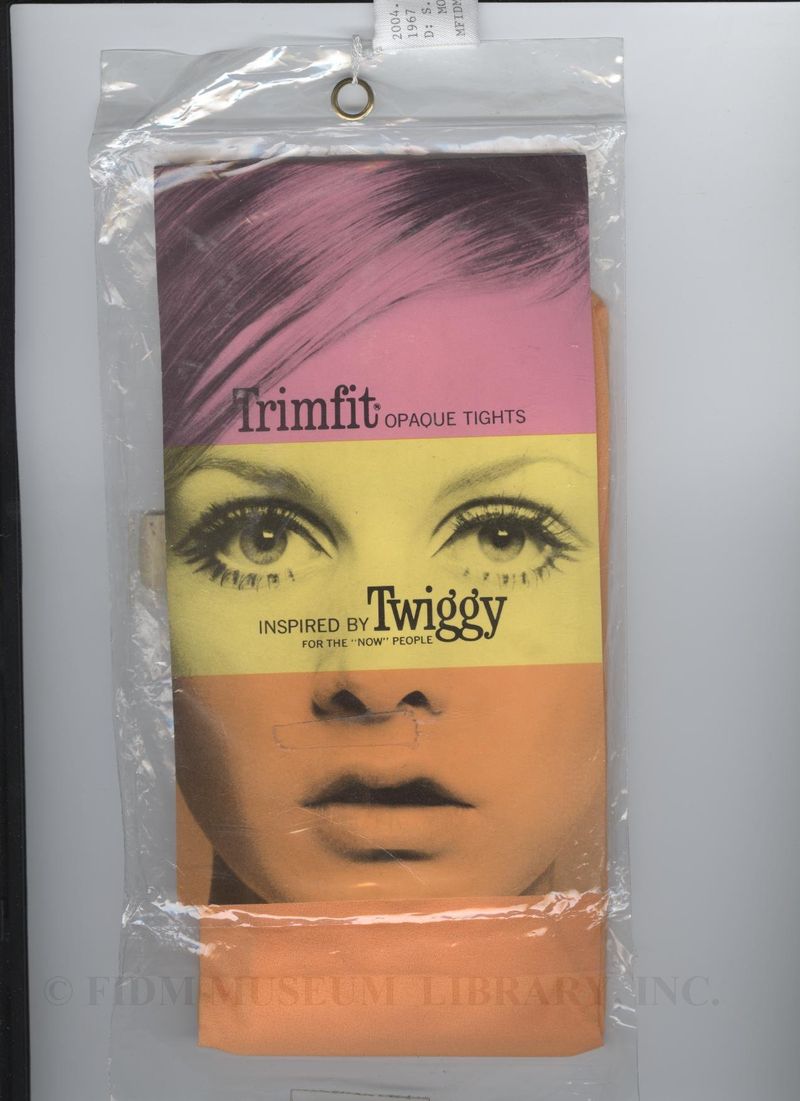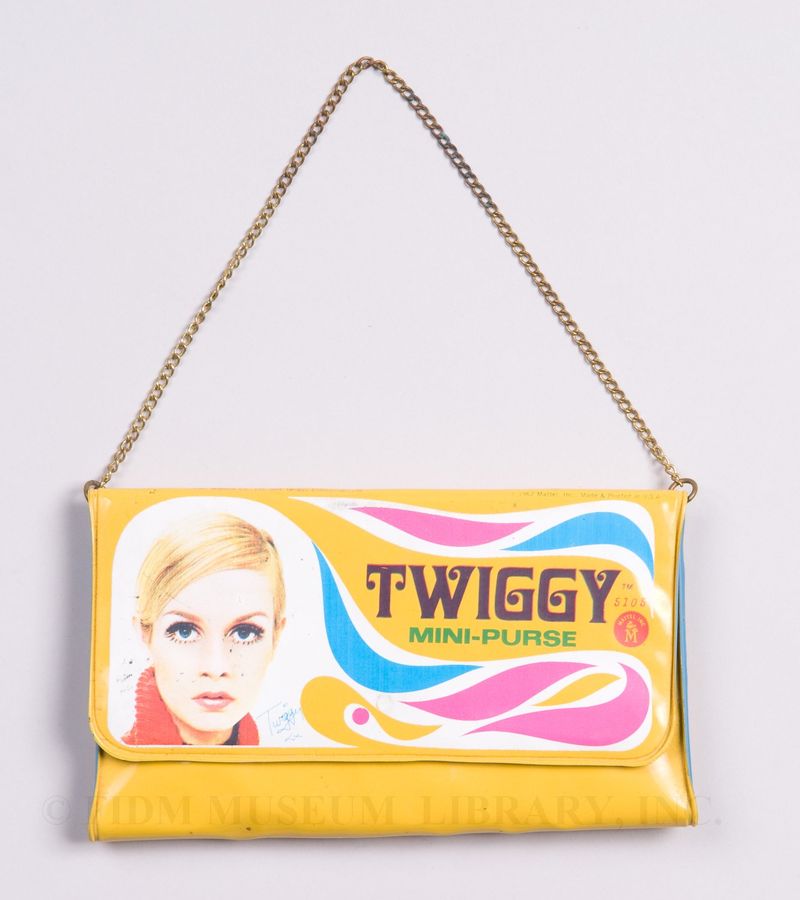Twiggy
The girl herself is the extravaganza that makes the look of the sixties.1 Twiggy exploded onto the scene in 1966 though pure happenstance. While getting a haircut at the London salon Leonard of Mayfair, 16 year old Twiggy (then known as Leslie Hornby) was persuaded to try a short, boyish hairstyle. A promotional photo of the resulting haircut was displayed at the salon. Within a few days, a fashion editor for the British newspaper Daily Express spotted the photo and asked for the name of the young woman pictured. Twiggy met with the editor, who had a few more photos taken. A few weeks later, Twiggy's father opened a copy of the Daily Express to see his daughter named the "Face of '66." In comparison to other models, Twiggy was tiny. Her short haircut and the doll-like black eyelashes she painted under her eyes reinforced an impression of childlike androgyny. This girlish self presentation perfectly suited the clothing of 1966, which focused on garments that deemphasized the female body. Photographs of Twiggy show her in childlike poses, such as on a child-size tricycle or throwing herself at the camera, arms outstretched. During interviews, Twiggy further reinforced her youthfulness by frequently responding to questions with "I dunno" and by fidgeting like a child. Despite her apparent naivete, Twiggy knew that her celebrity wouldn't last forever. To capitalize on her stature, Twiggy (apparently at the suggestion of her father) started Twiggy Enterprises, which licensed her image to numerous manufacturers. Though a clothing line designed by Twiggy was a financial flop, Twiggy merchandise was lucrative. False-eye lashes, notebooks, pens, paper dolls, lunch boxes, wigs, dress-up kits and hosiery are only some of the Twiggy licensed items marketed to her fans in 1967-68.

Twiggy tights Trimfit 1967 Gift of Stephanie Kline Morehouse 2004.148.5
On the packaging insert photo, you can see Twiggy's trademark under-eye makeup. Twiggy licensed products capitalized on her image, but she probably had no input in the design process.
 Twiggy mini-purse Mattel 1967 Gift of Kevin Jones 2006.155.1A-F
Twiggy mini-purse Mattel 1967 Gift of Kevin Jones 2006.155.1A-F
Mattel (maker of Barbie) also manufactured a Twiggy doll. The doll was 11" tall, made of bendable plastic and was marketed along with a full wardrobe. Along with the Twiggy doll, Mattel manufactured this child's purse and a Twiggy Fashion Tote bag. Twiggy received royalty payments for individual products as well as a lump-sum payment from each manufacturer who marketed her image. The success of her merchandising allowed Twiggy to retire in 1969, just two short years after her entrance onto the 1960s scene. During this brief window, her face became an icon of 1960s fashion and culture. Did Twiggy's canny marketing of her image help her maintain her iconic stature? Without these products, would we still remember her as the "Face of 66?"
1Twiggy editorial. Vogue 15 March 1967: 63. Dougherty, Phillip H. "Advertising: Twiggy? It's Only a Beginning." New York Times 3 Sept. 1967: 107.